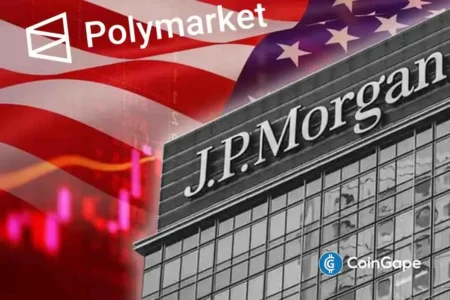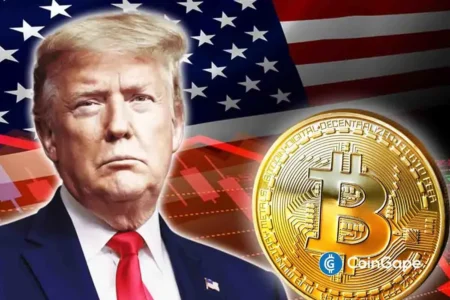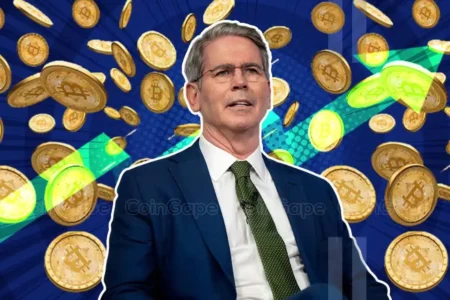The Ripple Effects of China’s Retaliatory Tariffs on the Global Economy and Cryptocurrency Market
On April 2, 2023, former President Donald Trump announced a new set of reciprocal tariffs aimed at various countries, including China. In response, China quickly declared it would impose a staggering 34% tariff on all imports from the United States, set to take effect on April 10. This rapid escalation further intensifies the already tense global trade war, signaling potential ramifications across international markets. Traders and economists are closely monitoring these developments, especially their impact on the cryptocurrency sector, which has grown increasingly intertwined with traditional financial systems.
In its official statement, the Chinese Finance Ministry urged the United States to retract its unilateral tariffs and engage in trade discussions characterized by equality, respect, and mutual benefit. This diplomatic plea reflects Beijing’s desire to alleviate the growing tensions; however, the imposition of tariffs speaks volumes about its resolve to protect its economic interests. With China reacting in such an assertive manner, the possibility of a prolonged and deepening trade conflict becomes more pronounced. Markets worldwide are already feeling the pressure, as the cryptocurrency space, especially Bitcoin, reacts to these geopolitical tensions.
Following the announcement of the tariffs, the price of Bitcoin, which had momentarily surged to $84,000, experienced a notable decline, dropping below $82,000. This price shift illustrates the prevailing bearish sentiment permeating the crypto market as a result of trade disputes. Analysts indicate that these tariffs could lead to heightened fear and uncertainty among investors, echoing a larger atmosphere of instability that could adversely affect crypto prices. In addition, European Union officials, led by President von der Leyen, have indicated their willingness to implement countermeasures if negotiations with the U.S. do not yield positive results. This suggests that further declines in the cryptocurrency market may be on the horizon as the global trade war intensifies.
Despite the challenging landscape, some analysts remain optimistic about the cryptocurrency market’s resilience. Crypto analyst Kevin Capital posits that, unlike traditional markets, cryptocurrencies might not experience the same level of decline amid these tariff announcements. He notes that while crypto is indirectly impacted by tariffs, it is simultaneously buoyed by favorable monetary policy expectations. As traders anticipate potential rate cuts from the Federal Reserve, confidence persists in the cryptocurrency market, suggesting it may weather the storm better than more traditional equities.
However, the looming presence of Federal Reserve Chair Jerome Powell introduces a variable that could drastically alter market dynamics. If Powell dismisses the prospect of future rate cuts, it could trigger intensified declines within the crypto market, bringing it into closer alignment with the downward trajectory currently seen in stock markets. The S&P 500 index already shed over $1.5 trillion shortly after the tariff announcements, highlighting the correlation between geopolitical tensions and market reactions. Conversely, if Powell entertains easing monetary policy, the crypto sector could find itself in a favorable position, particularly as market watchers await the upcoming Consumer Price Index (CPI) report, which could dictate future investor sentiments.
The diverging paths of cryptocurrencies and stock markets amid the current trade turmoil raise important questions regarding their correlation. As traditional markets appear to be facing greater challenges, Bitcoin’s ability to rebound following positive U.S. employment data indicates that its performance may be less influenced by trade wars and more by macroeconomic policies. Thus, it seems that the crypto community remains focused on larger economic indicators, which could ultimately shape the narrative in the face of trade-related adversities.
In conclusion, as the global landscape becomes increasingly complex with the introduction of China’s retaliatory tariffs, the cryptocurrency market finds itself at a crossroads. While the potential for significant volatility exists, there are also signs of resilience grounded in broader economic expectations. Analysts and traders will need to remain vigilant, keeping a close eye not just on the unfolding trade war, but also on monetary policy shifts, as these factors will undeniably shape the trajectory of both traditional and digital assets in the coming months. The interplay between geopolitical events and market reactions serves as a timely reminder of the interconnected nature of today’s financial systems, underscoring the need for adaptive strategies in uncertain times.
















